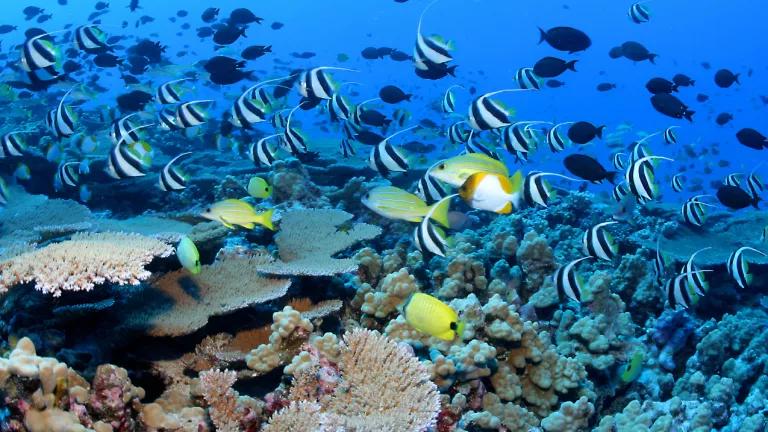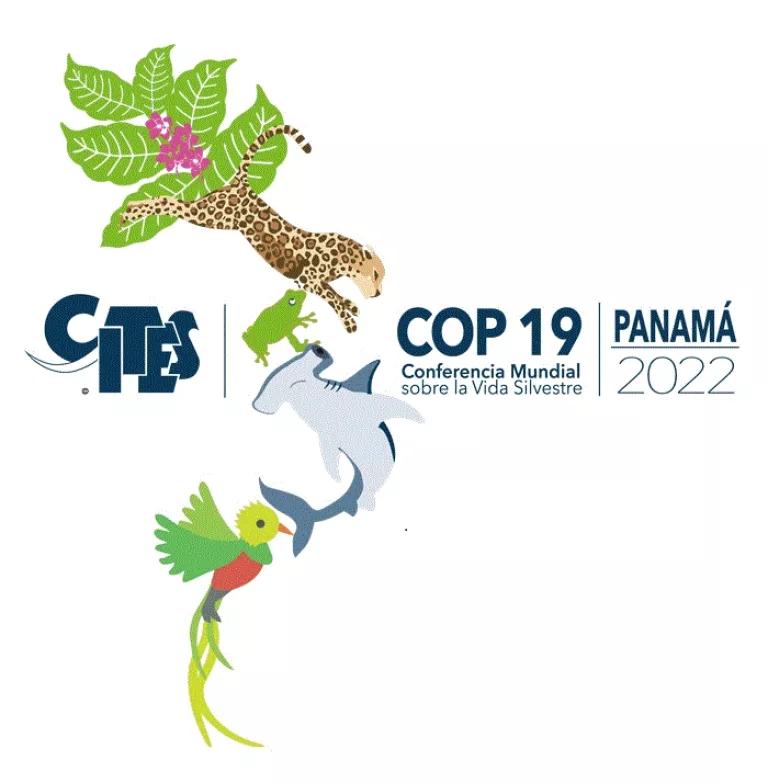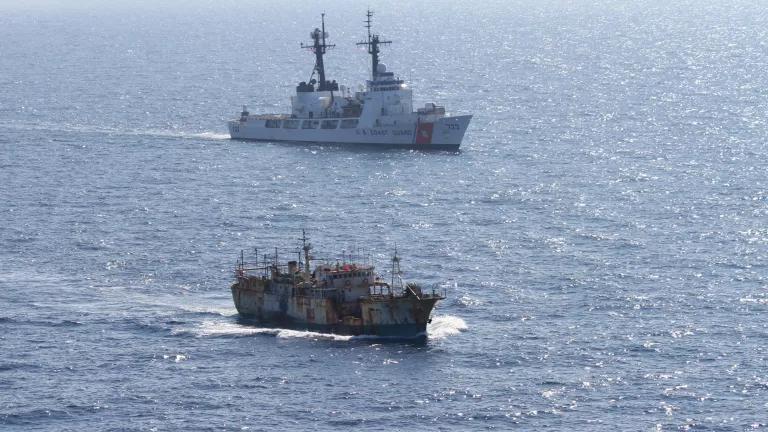
School in great numbers at Rapture Reef, French Frigate Shoals, Papahānaumokuākea National Marine Monument
Governments from around the world are meeting for the next two weeks in Panama to make decisions on global trade in wild plants and animals at the 19th meeting of the Convention on International Trade in Endangered Species of Wild Fauna and Flora (CITES CoP19). It’s a critical meeting because direct exploitation of species, including wildlife trade, is a leading cause of the biodiversity crisis, threatening the foundations of human life and driving the extinction of at least one million species. While countries will make decisions specific to individual species, like elephants, hippos and sharks, the current rate of extinctions challenges them to break the business-as-usual model and disrupt the biodiversity crisis.
Biodiversity Crisis Recap
Nature is in decline. As described by Robert Watson, former chair of the Intergovernmental Science-Policy Platform on Biodiversity and Ecosystem Services (IPBES), “The health of ecosystems on which we and all other species depend is deteriorating more rapidly than ever. We are eroding the very foundations of our economies, livelihoods, food security, health and quality of life worldwide.” The data are alarming. Seventy-five percent of global land areas have been severely altered by human activity. More than 85 percent of wetlands have disappeared over the last 300 years. The global species extinction rate is tens to hundreds of times higher than the average over the last 10 million years and is accelerating. More than 500,000 terrestrial species have insufficient habitat for long term survival. More than 40 percent of amphibians, like frogs and salamanders, are threatened with extinction as their habitat disappears and species are collected for the pet trade. One third of marine fish stocks are overharvested and 60 percent are harvested at the edge of sustainability.
Humans are suffering. We depend on high functioning, thriving, and abundant-with-wildlife ecosystems to produce the critical foundations of human life and society like clean air and water, food security, crop pollination, and flood control. Altogether, one in five countries are at risk of their ecosystems collapsing because of declines in biodiversity and other natural services.

CITES Parties Must Meet the Moment
CITES is an international agreement between nearly all countries with the goal of ensuring that international trade in specimens of wild animals and plants does not threaten their survival. CITES’ moment is now. It has a critical role to play given its power to reduce direct exploitation of species. Through it, the global community has the power to put in place regimes and mechanisms that would ensure that international trade in wildlife is not contributing to the biodiversity crisis.
While CITES has great potential, it’s not clear if countries are ready to unlock it. Scientific studies show that it has not yet protected many species deemed “threatened with extinction” by the International Union for Conservation of Nature (IUCN). And when it does, there’s considerable delay between when a species is recognized as needing protection from trade and when it receives it under CITES.
And CITES is DEFINITELY not ready for the whole-scale biodiversity collapse that lays ahead. In the coming decades, increasing numbers of species will slide closer to extinction and many will go extinct absent a transformational change to our dysfunctional relationship with nature.
It’s clear that humanity needs a higher level of ambition at CITES. Here are three things the Parties should be doing at CITES CoP19 to demonstrate they’re ready to meet the moment and break with business-as-usual:
- Parties should support any science-based species proposal that increases protection For species proposals (proposals to put restrictions on trade in specific wild plants and animals), the Parties should keep the precautionary principle front and center. In the context of the biodiversity and climate crises and their implications for the future health of ecosystems and individual species, Parties’ starting positions should be to support all proposals that extend greater protections to species. As the decades unfold and the status of species worsen, biodiversity declines further, the climate crisis deepens, and the number of people suffering and dying as a result increase, greater protections for species should only be withheld in extreme situations.
- Parties should start building infrastructure to facilitate greater ambition – Lack of capacity is keeping Parties from being strategic. Species proposals and dedicated interventions by CITES committees and the CITES Secretariat are not aligned with an overarching strategy to combat the biodiversity crisis. For example, proposals to list species on CITES Appendices (trade is regulated based on whether a species is listed on Appendix I, II, or III) are often not aligned with the greatest need. Thus, in the case of critically endangered species, there’s no process or agreement to ensure that all critically endangered species that are or may be affected by trade are given the highest level of protection, even though these are the species most in need. Parties could alleviate the harm from this disconnect between CITES’ effort and species’ needs by producing more streamlined information and processes that direct the attention of Parties where it’s most needed to help combat the biodiversity crisis.
- Demand countries must step up and close markets and trade routes – International trade in wild plants and animals is largely driven by demand in a handful of countries. China, the United States, and European countries are the largest consumers of wild plants and animals. Given the biodiversity crisis, these countries should be identifying steps they’ll take to reduce demand, like closing domestic markets–which China and the United States did for ivory. At CoP19, Parties should take similar action to help save pangolins – the most trafficked mammal in the world – by adopting a decision urging the closure of domestic markets for commercial trade in pangolin.
Admittedly, these three things aren’t terribly ambitious, but unfortunately the agenda and program for CoP19 haven’t teed up the kind of paradigm shift that’s necessary to address the biodiversity crisis. But with these actions, the Parties at CoP19 could signal a change in approach that would set CITES on a better path.
And a better path is desperately needed. Children everywhere on the planet are guaranteed a lower quality of life than the lives we’ve all had. They will know a planet with less biodiversity, fewer species, intense environmental degradation, and human death and suffering unparalleled in history. That’s where we find ourselves and we must respond accordingly.
NRDC will be posting regular updates from CITES COP19 here.




